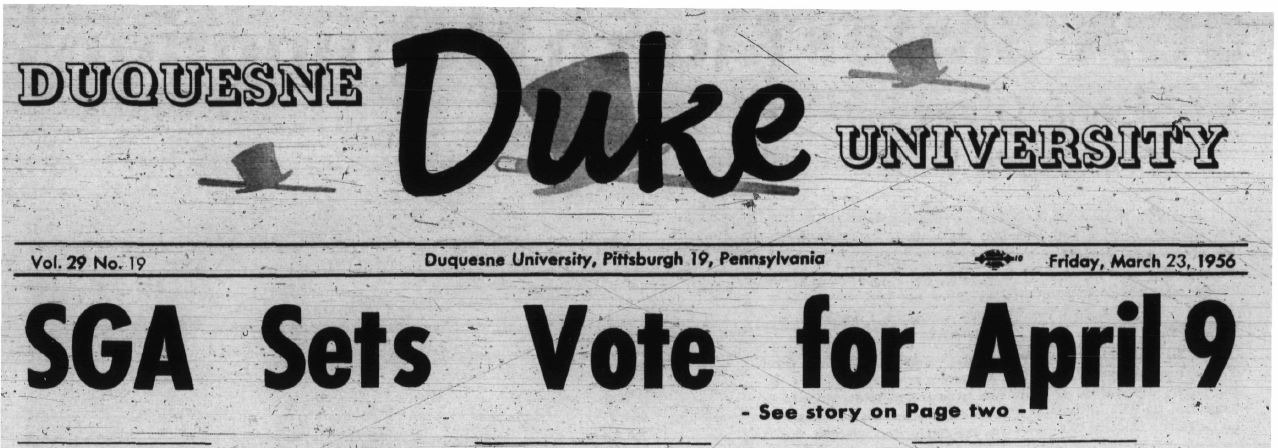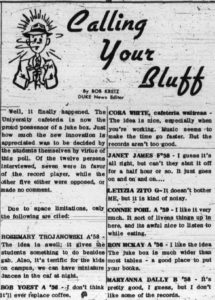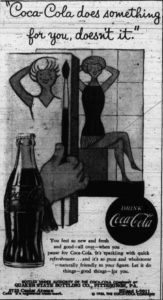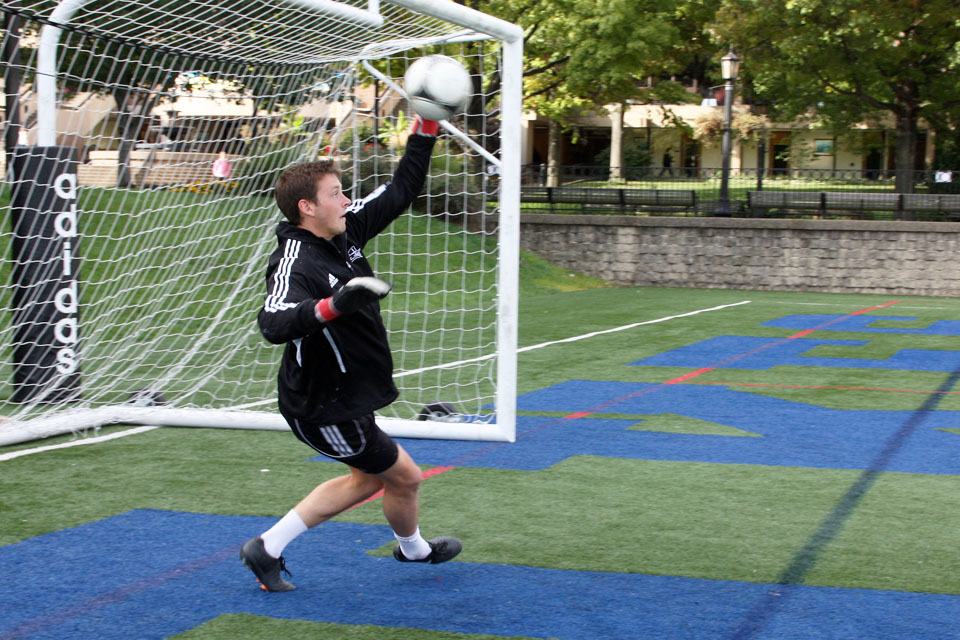

By Trevor Hipkiss | Staff Writer
Since 1925, The Duquesne Duke has been serving the Duquesne community by reporting on the issues that matter. Thanks to the Gumberg Library Digital Collections, our 90-plus year history is always just a few clicks away. With that in mind, here is the fourth of many dips back into The Duke’s archives.
The year is 1956 and Duquesne University is buzzing with activity. The prospect of the coming Easter holiday and excitement surrounding basketball reverberates through the Bluff. Student Government elections and the Easter Ball, a springtime dance, were rapidly approaching. Some things never change when it comes to the interests of college students.
***
One particular event of such interests was a retreat offered on the topic of salvation. Amidst the Easter excitement sweeping through campus in 1956, Rev. Joseph F. Rengers, the University chaplain at the time, set up a spiritual retreat with a side of psychology. With the help of pastor and psychologist Herbert Farrell, they scheduled a week’s worth of sermons on the subject.
***

When it came to voting for the Student Government Association, things weren’t always so simple. This was especially true in late March of 1956. Facing the repercussions of several irregularities in the election the previous year, a brand-new set of rules were put in place. These assurances made it so things such as coercion and proxy voting were no longer allowed.
This was also amidst the creation of a new SGA constitution that was to be ratified directly before the elections. Thankfully, the Intercollegiate Conference on Government stood in as a non-partisan election committee until things smoothed over. These were much-needed changes that would lead to fairer elections in the future.
***
Everyone in America is aware that it’s March thanks to the buzz over the NCAA tournament. The excitement for college basketball was thriving in 1956 as much as it is today. Unfortunately, most Duquesne students were lamenting something a little different than their incorrect bracket picks. This time around they were fresh off the elimination from a different basketball tournament.
The Dukes were participating in the National Invitation Tournament, or NIT, a tournament that they had won the year prior. They had made it to the quarterfinals only to fall to Louisville, the eventual tournament winners. It was a messy game with roughly 30 fouls called in the first half alone. In summary of their season, Sports Editor Bob Kristen reported that they had strong coaching and a strong sense of heart despite lacking a lot of height.
***

The dampened spirits that followed the Dukes’ unfortunate loss in the NIT didn’t hang for around for long. Attention was about to shift toward the baseball team in anticipation of the coming season. The team was gearing up for a strong season under coach Doc Skender. In his sixth season with the team, Skender had earned high praise for his team’s strong showing in the each of his previous seasons. The team had an optimistic outlook and hoped to repeat the success they had the past four seasons. This hopeful outlook was backed up by Skender’s ability to find the talent needed to keep his team working like a well-oiled machine.
***
Another reason to celebrate if you were a Duquesne student was the addition of a new jukebox in the University cafeteria. This addition was a big deal for students, who had mixed reviews over the new machine. Some felt that the jukebox was just too noisy and annoying. Cora White, a cafeteria waitress at the time, was quoted saying that “the records weren’t too good.” However, just as many students were thrilled with the jukebox. It’s not hard to understand why since the majority of modern day college students listen to music when doing work.
***
One thing that was particularly entertaining was the surplus of 1950s adds that littered the interior of this addition. From cigarette ads to 75 cent haircuts to a possibly sexist Coca-Cola ad, paging through the issue is like stepping into a time machine. One can almost hear the “new” jukebox in the cafeteria. It makes a reader feel proud to be on the same campus some six decades later.



